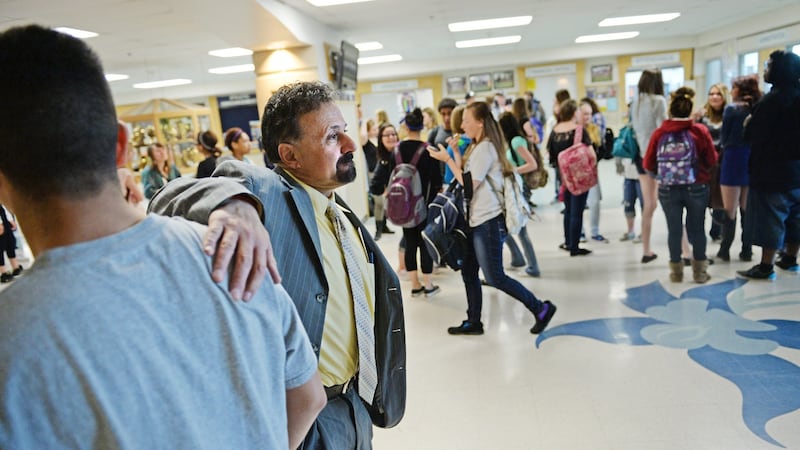It's funny how you can hear something by chance that takes your life in a new direction. Driving one day in May 2014, I heard a radio interview with Frank DeAngelis, principal of Columbine High School, in Colorado, on the occasion of his retirement after 35 years' service.
Columbine is perhaps the most famous high school in the United States, for all the wrong reasons. It conjures images of the appalling shooting spree there on April 20th, 1999, which resulted in 13 deaths and traumatised hundreds of students and staff.
The two seniors responsible, Eric Harris and Dylan Klebold, also took their own lives that day. But that's only half the story.


The radio interviewer asked why Frank had stayed on as principal after the massacre. “It was a time for us to stand together rather than walk away,” he said.
Columbine for Frank is not only a tale of horror but also a story about our capacity to come back from the traumas we all experience. He described the shooters as “two troubled kids who had been trying to tell us for years that they needed help”. But, he added, “We weren’t listening.”
Against many people’s advice he stayed on for 14 years to create a “listening school”.
I began to write to Frank DeAngelis after hearing that interview and accepted an invitation from him to visit Columbine last year. As we drove to the school I was struck by how tidy and normal the neighbourhood looked. Frank noticed my reaction and said, “If you’d looked for a school where something like this could happen, Columbine would be the last one you’d have picked.”
We walked into the school and down a corridor lined with hundreds of blue lockers. He relived what had happened. “This is where Rachel fell. She was the first.” He pointed to an image of a butterfly sealed on to a floor tile to mark her memory.
Frank narrowly escaped death because his friend and colleague Dave Sanders appeared around a corner and drew the shooter’s attention. He feels survivor’s guilt every day. I asked how he makes sense of this.: “There are no easy answers,”, he said.
“Dylan was depressed and hated himself. Yet three months prior to the shooting he had applied and been offered a scholarship to the University of Arizona. Harris’s dad was in the military, and he himself had just been accepted for the army a few weeks before the shooting. Something happened to those two boys. Hate grew in their hearts.
“Maybe their mental health was implicated; maybe there was something else. What I saw on the basement video tapes – where they meticulously recorded their 12-month preparations leading up to the attack – was brutal anger at the world.”
In describing how the school recovered, Frank said, “I came to see that everyone was in a different place after the shooting. We needed to build a community of understanding that allowed for each person. “We had to learn to listen to one another and provide a range of supports for students, teachers and parents. I also learned that this would be a marathon, not a sprint. People at school would ask me, ‘When will we get back to normal?’ I told them that there was no going back to normal. We had to redefine normal.”
Before he could help anyone Frank needed to help himself first. He suffered a severe post-traumatic reaction and needed counselling. “I know I wouldn’t be here had I not been able to reconnect with my faith and get the right support. And talk to someone who is properly trained. Friends are precious, but sometimes we need people with the right kind of skills to help us.”
When he was well enough he worked at rebuilding a sense of belonging in the school. He made time to identify and listen to the most marginalised and alienated students. He asked one particular group, who never mixed, “So, what would it take to make you feel more connected to Columbine?” They replied, “Stop expecting us to be like everyone else – we’re different.”
What can Ireland learn from Columbine? “We need to be vigilant. As parents we need to be present. As educators we need to recognise and take ownership of the impact we have on our students’ lives,” he said. “Parents need to be involved in their children’s lives as adults rather than friends, and recognise that young people can get stuck in dark places.
“Often they will try to let people know that they are in trouble. Some will virtually broadcast it through social media, but there’s not always someone listening. Averting tragedy is about building sound relationships. You may never know the difference you make.You can never know how much an encouraging word, giving of your time or a smile can mean. You can turn around a young person’s day, or even their life.”
Frank DeAngelis will be a guest speaker at a public event at Mansion House, Dublin, on Wednesday, September 14th, 6.30-8.30pm; jigsaw.ie/columbine. Tony Bates is founder director of Jigsaw: the National Centre for Youth Mental Health

















